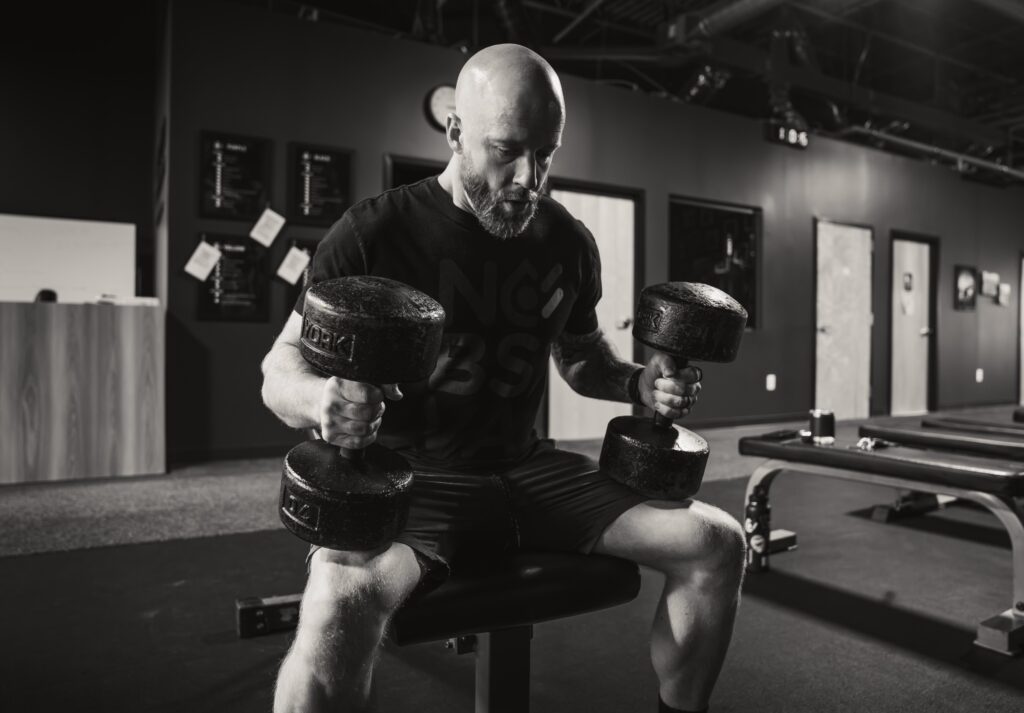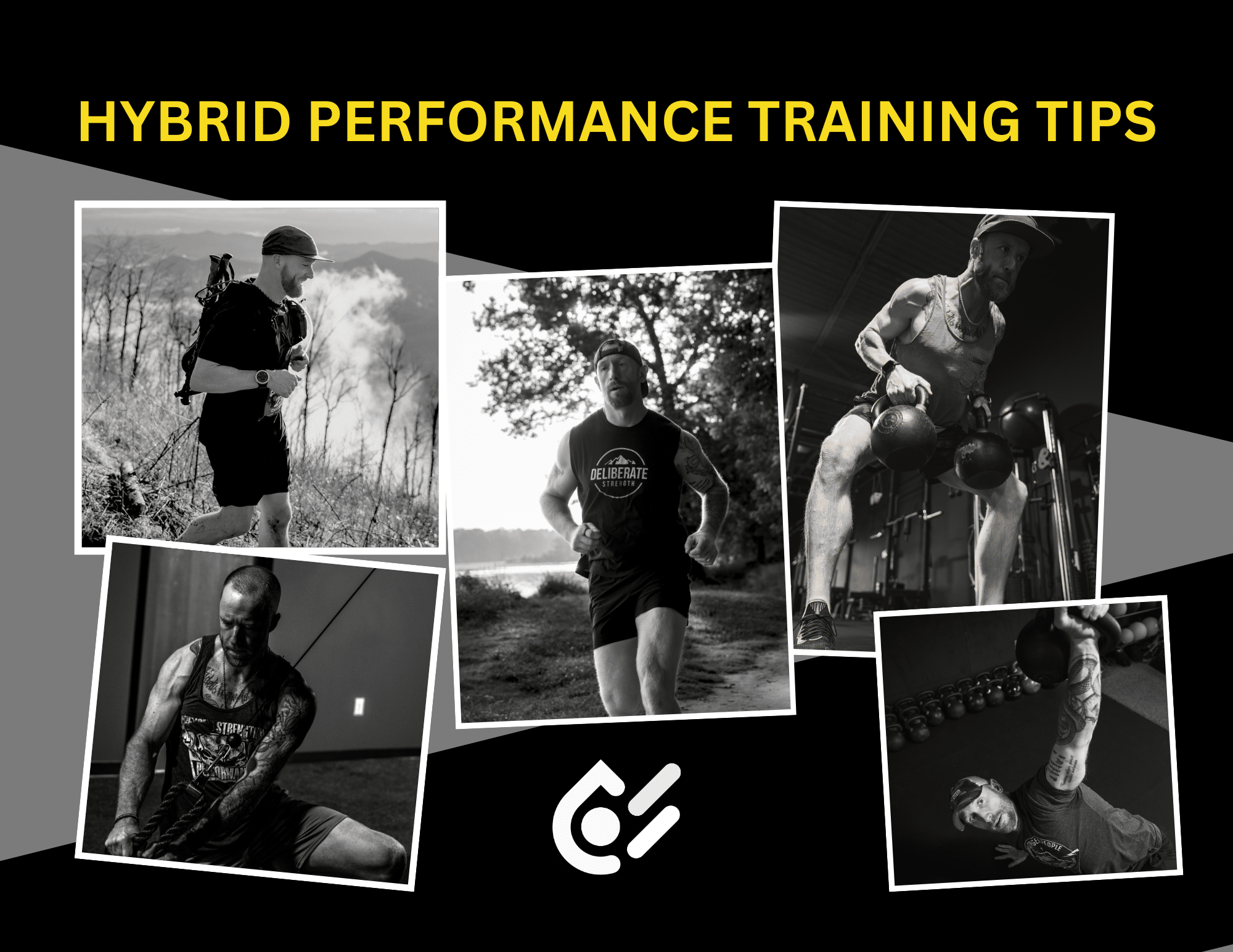Hybrid athlete training requires a delicate balance between training and recovery. More so than other forms of training because you’re stressing the body in multiple ways during the same training program. And that often means two totally different types of workouts on the same training day.
That is a lot to manage if you’re not sure how to approach it. The whole deal brings up a lot of questions. Should you do two-a-days? If so, which workout should you do first? When should you do them?
You’ll get those answers and more, so you know how to plan your training day as a hybrid athlete. We’ll walk chronologically through the training day, assuming that you’re doing two-a-days. Then we’ll finish up by helping you plan should you only have a time block for one workout.
And now, we party.
Morning Workout
The first thing to do is wake up and hydrate. It’s a wise idea to toss down 16 ounces of water mixed with an electrolyte supplement and add some more water on top of that, finishing in the 20 to 30 total ounce range.
This is also a good time to fuel if you have a hard morning workout. It could require you to work at a higher intensity, or one that has you working for a long duration (120 minutes or more). If that’s so, eat some carbs and a little fat to give you the sauce for your workout. If you have an easy workout, it’s likely fine that you just hydrate and then get to work. Training easy on an empty stomach can help improve metabolic flexibility, and your ability to switch between burning fat and carbs for fuel.
Also, it’s sometimes fine to do long-duration easy sessions on an empty stomach. This is also good for metabolic flexibility. The thing is, you must be diligent about managing your intensity. If you get going too hard, you will burn through your carbs and end up bonking. This, my friend, is not good. If you’re going long and easy, take it low and slow if you plan to go fasted. It’s also a good idea to take some carbs along with you should you make an oopsy and go too hard.

Now, this first session of the day should prioritize the workout that you most need right now. If strength is your biggest deficit, you should likely lift first so you have the most gas to dump on that fire. Save your conditioning for later in the day. If endurance is your current ticket, you should likely condition in the AM and save your lift for later in the day. Keep in mind that this is a general guideline; everyone is different. Sometimes folks who are very well adapted to endurance training can do those workouts first and still have gas for an afternoon lift.
To start, however, it’s best to prioritize your biggest need and do that workout first.
Also, pay attention to workout timing and how it affects your sleep and recovery. Over the past few months, I’ve been training a guy for an ultra while maintaining his strength. Even though endurance training is our main goal, he lifts in the morning and runs in the afternoon during scheduled two-a-days. This is because we found that lifting later in the day disrupts his sleep and running doesn’t. Again, I’m offering guidelines. Experiment and see what works best for you.
Post Morning Workout
It’s time to nail your nutrition. Post-workout nutrition is always important, but it’s imperative during two-a-days. This is the best time to ingest protein for increased protein signaling and recovery. Replenishing carbs is super important for fueling your workout later in the day while also maintaining balanced hydration. Whether it’s a shake or a meal, you need carbs and protein soon after your morning workout.
Middle of the Day
This is when most folks are at work. So, as you slave away for your corporate overloads, be sure to drink to replenish the fluid loss from your morning workout and get in one or two solid meals. It’s also a good idea to find yourself 5 to 10 minutes to just relax and breathe. It’ll do a ton for maintaining your nervous system tone and giving you a nice little recovery trough before it’s time to ramp yourself back up for your second workout of the day.
Afternoon/Evening Workout
This session should be at least three to four hours after your morning workout. You need the refractory period for recovery. And if you’re doing very different types of workouts, you’ll need the space between sessions so you don’t fuck with the adaptations you need from each type of training.
Remember the guidelines from the morning workout. In most instances, this should be your secondary workout.

It’s also important to consider this workout within the grand scheme of the training week. For example, if you have a V02max and easy run scheduled for one day, and then the next day is a one-workout lifting session, it’s important to give yourself ample recovery between the hard sessions. In this case, it makes the most sense to do the V02max session in the morning and the easy/recovery run in the afternoon. This spaces out the hard workouts and introduces a recovery stimulus between them. (Many times we stack high-intensity stressors on the same day so that we get true recovery days. But that’s not always the case and it’s not always possible.)
Post-workout nutrition is, again, imperative. Get in a solid meal that meets your nutritional and caloric needs so that you recover from your double session.
Multiple Training Stressors in One Block of Time
Let’s say you only have one, two-hour block of time in the morning and you can’t spread your training stressors throughout the day. It’s best if you do your endurance training for the first hour or so and then your strength/power training. This gives your body the best opportunity to adapt to each stressor. Placing the strength training first in the same session interferes with the adaptations to the endurance session.
Simple Hybrid Athlete Daily Planning
Prioritize your morning workout, but experiment with what works best for you. Everyone is different. Be sure to hydrate and fuel before and between workouts. And if you need to do both types of training in the same session, put the endurance training first.
You might also like:
- 4 REASONS WHY YOUR ENDURANCE PLATEAUED
- HOW TO TRACK YOUR FITNESS PROGRESS
- GAMING YOUR WEARABLES: HOW TO BEAT YOUR FITNESS TRACKERS INSTEAD OF THEM BEATING YOU
- MORPHEUS HEART RATE TRAINING: WHAT IT IS, WHY WE USE IT, AND HOW YOU CAN GET THE MOST OUT OF IT
- THE MOST IMPORTANT FITNESS VARIABLES: CONSISTENCY AND CONTINUITY
- HOW TO SET GOOD GOALS
- LIVE PHYSICALLY IN 2024
- 3 WAYS TO INCREASE MUSCLE MASS
- LIVE YOUR EVERDAY ADVENTURE
- WHEN CAN YOU EXPECT REAULTS FROM TRAINING?
- WHY STRENGTH SHOULD BE YOUR MAIN FOCUS DURING THE FALL AND WINTER
- YOU’RE NOT OLD, YOU’RE JUST ACTING LIKE IT
- BUILDING RESILIENCE: HOW MOBILITY TESTS ENHANCE YOUR STRENGTH TRAINING
- RELATIVE STRENGTH: WHAT IT IS, WHY WE TEST IT, AND HOW TO BUILD IT
- LIFE BEYOND YOUR GYM GOALS
- EUSTRESS TRAINING: HOW TO LIFT WEIGHTS AND MANAGE STRESS AT THE SAME TIME
- WANT TO MAKE PROGRESS? PUT SOMETHING HARD ON THE CALENDAR
- HOW TO RECOVER FROM YOUR WORKOUTS
- START NOW: WHY WAITING FOR THE PERFECT TIME IS THE WORST THING TO DO
- HOW (AND WHY) OUR YEAR-LONG TRAINING PLAN WORKS

